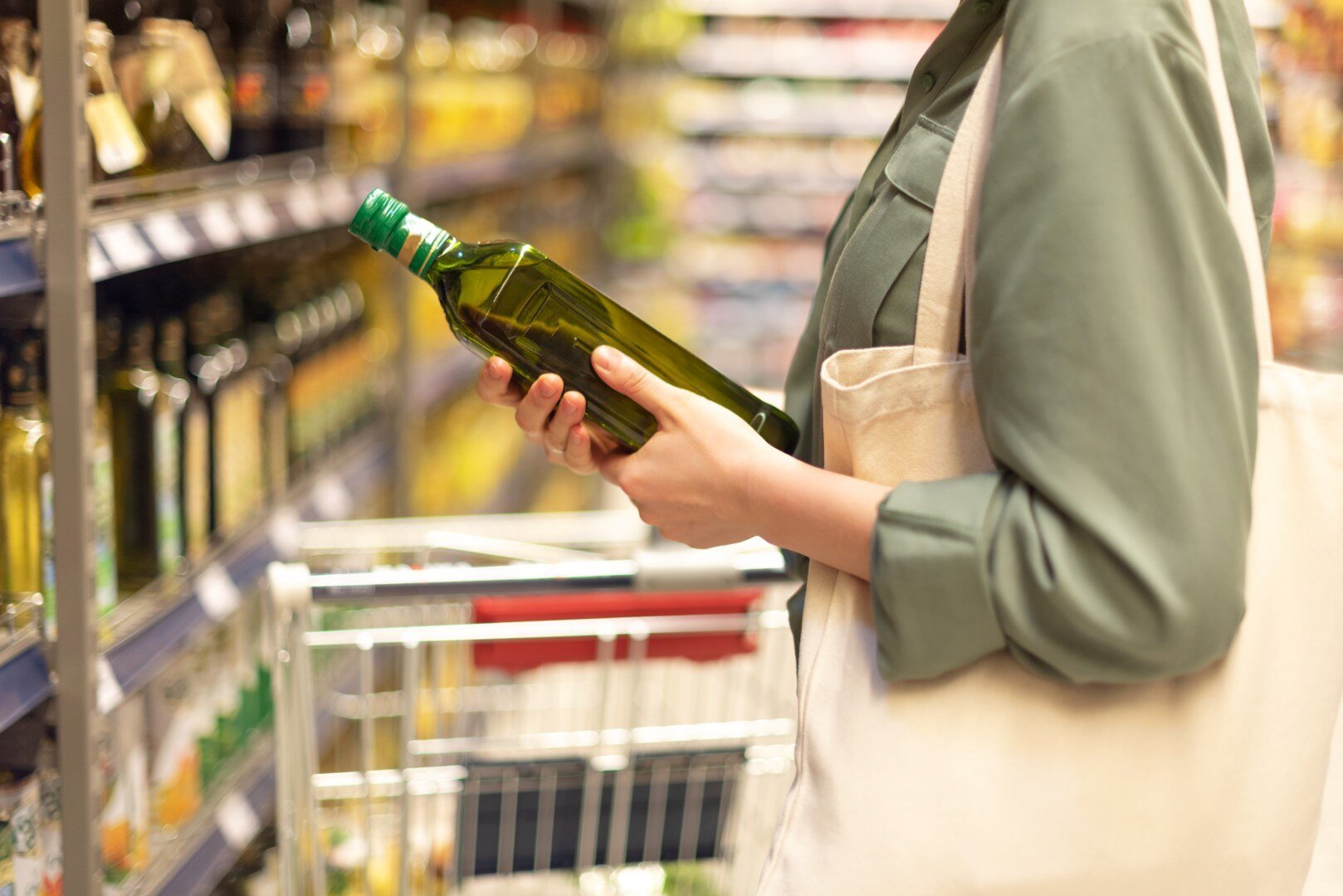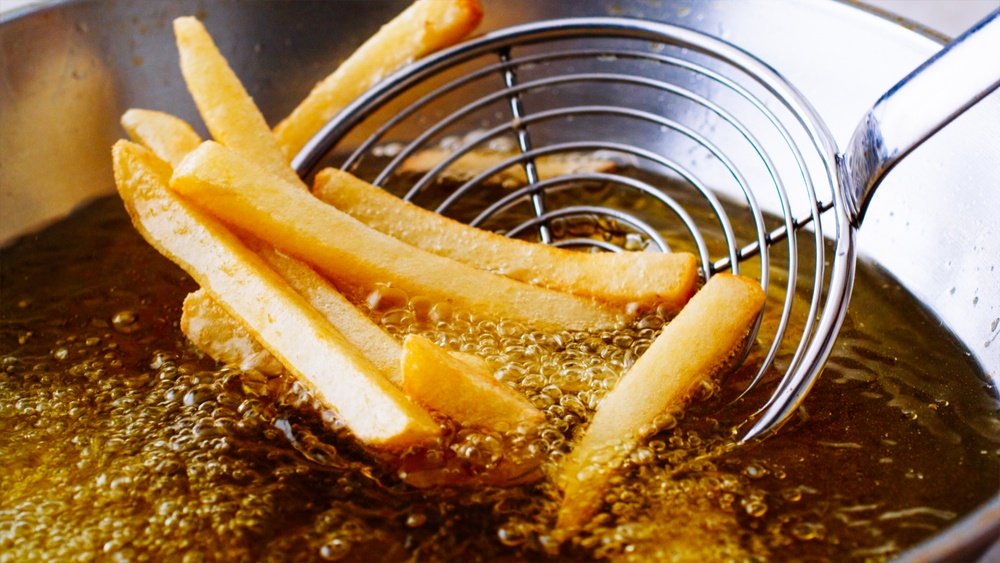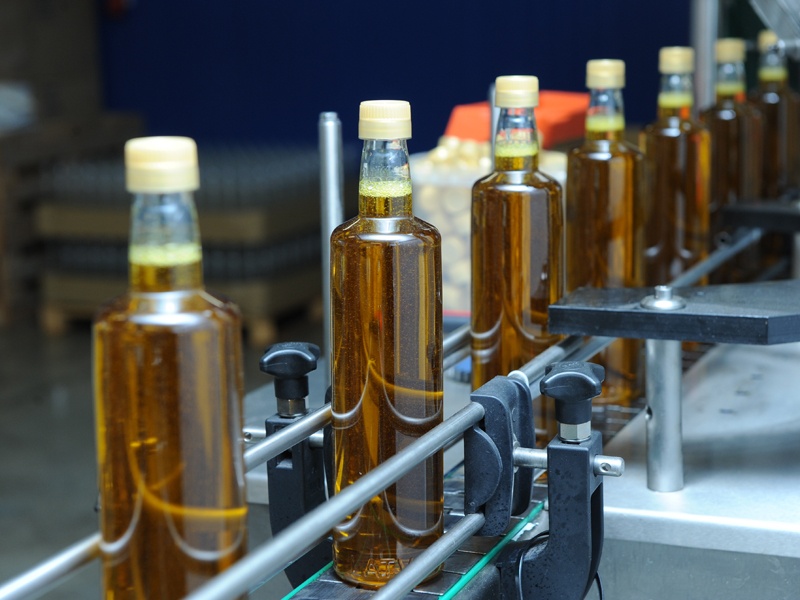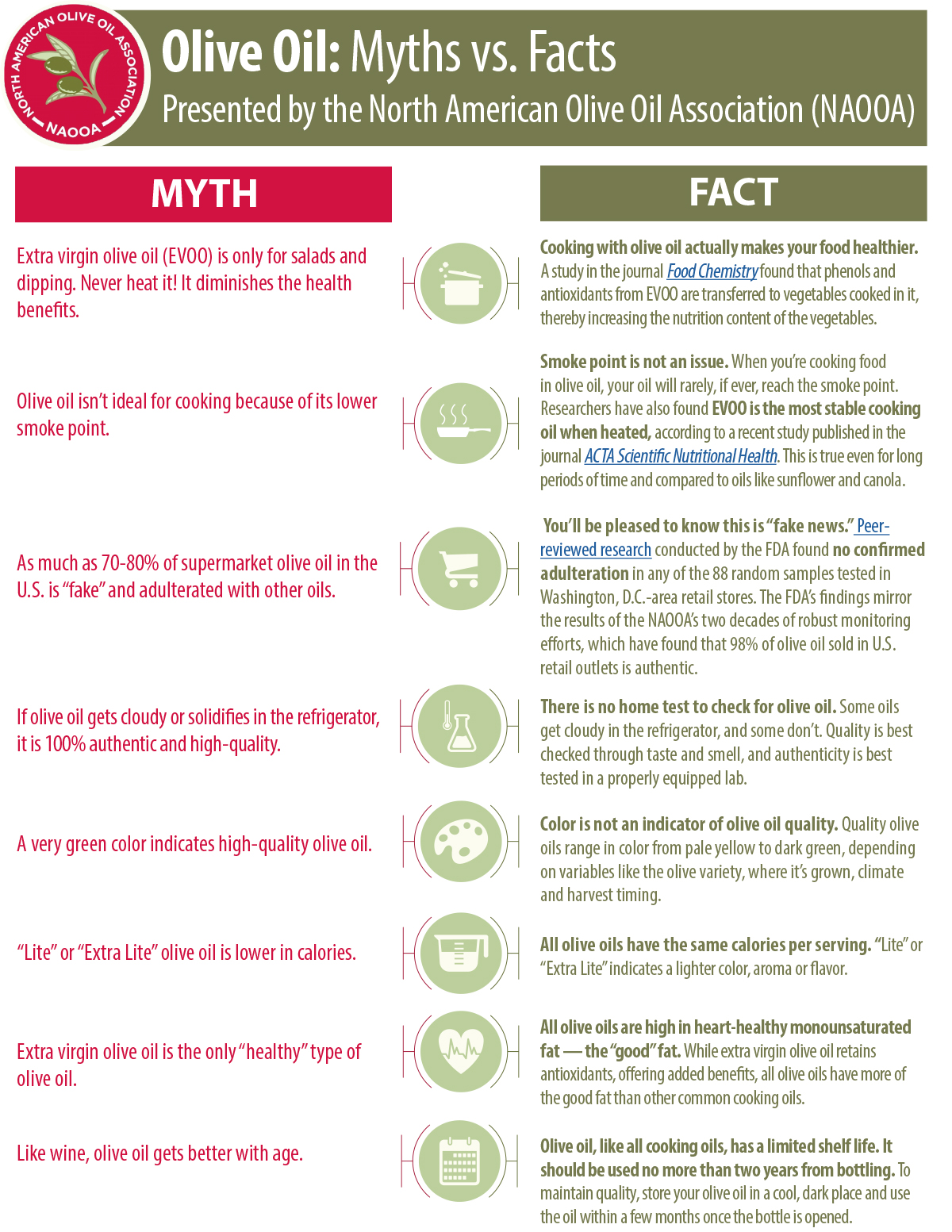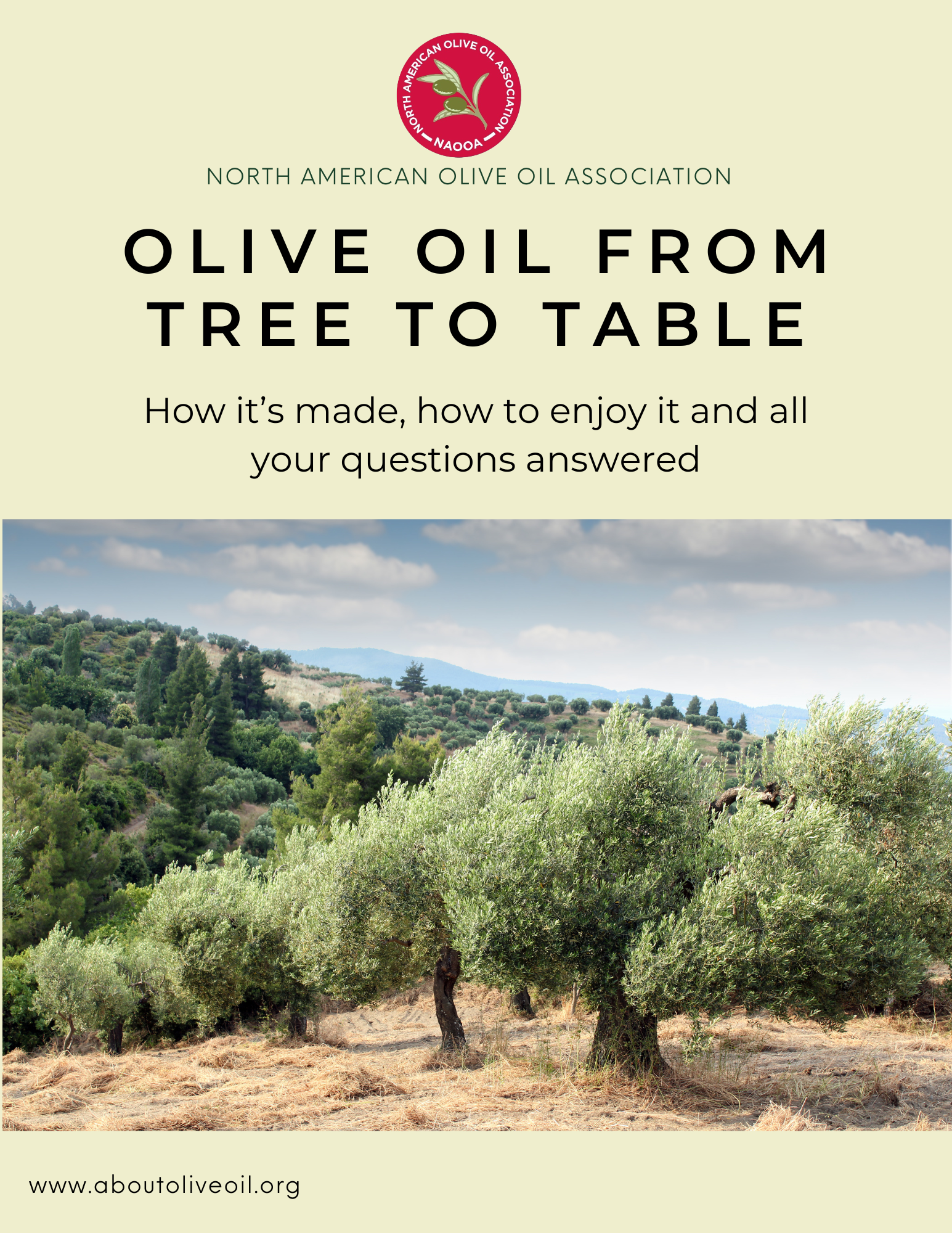For consumers seeking extra assurance of olive oil quality, here is a list of the olive oils that are enrolled in the North American Olive Oil Association's (NAOOA's) Certified Olive Oil Seal program for random testing and certification.
The NAOOA olive oil certification program is the nation's largest and most complete olive oil testing and certification program. We purchase olive oils from supermarkets in the USA and Canada and test them multiple times per year for adherence to the physico-chemical purity and quality standards set by the International Olive Council (IOC).
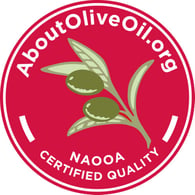 Our list of certified olive oil changes on a regular basis. Please refer to our master list of certified olive oils for an up to date list.
Our list of certified olive oil changes on a regular basis. Please refer to our master list of certified olive oils for an up to date list.
Brands that are part of the NAOOA Certified Seal program may bear this mark in either black and white or color. It is also possible that a product may be certified, but choose not to put the seal on the label (check out the FAQ on the seal program below).
As of June 15, 2024, the list is as follows:
Aldi
- Carlini Extra Virgin Olive Oil
- Carlini Olive Oil
- Simply Nature Organic Extra Virgin Olive Oil
- Sicilian PDO Certified Val Di Mazara Extra Virgin Olive Oil
- Botticelli Extra Virgin Olive Oil
- Colavita Premium Selection Olive Oil
- Colavita Premium Italian Extra Virgin Olive Oil
- Colavita Mediterranean Extra Virgin Olive Oil
- Colavita 100% Greek Extra Virgin Olive Oil, Premium World Selection
- Colavita 100% Spanish Extra Virgin Olive Oil, Premium World Selection
- Colavita Organic Extra Virgin Olive Oil
- Colavita Olive Oil
- Filippo Berio Extra Virgin Olive Oil
- Filippo Berio Extra Virgin Olive Oil Delicato
- Filippo Berio Extra Virgin Olive Oil Robusto
- Filippo Berio Light-Tasting Olive Oil
- Filippo Berio Olive Oil
- Filippo Berio Organic Extra Virgin Olive Oil
- Filippo Berio 100% Italian Extra Virgin Olive Oil
- Goya Extra Virgin Olive Oil
- Goya Organic Extra Virgin Olive Oil
- Goya Unico Extra Virgin Olive Oil
- Goya Puro Olive Oil
- Goya Light-Tasting Olive Oil
- Iliada Extra Virgin Olive Oil
- La Tourangelle Organic Extra Virgin Olive Oil
- La Tourangelle Organic Smooth & Fruity Extra Virgin Olive Oil
- La Tourangelle Organic Bright & Peppery Extra Virgin Olive Oil
- Moresh Extra Virgin Olive Oil
- Napa Valley Naturals Organic Extra Virgin Olive Oil
- Olitalia Extra Virgin Olive Oil
- Origin 846 Extra Virgin Olive Oil
- Pompeian Extra Virgin Olive Oil Robust
- Pompeian Extra Virgin Olive Oil Smooth
- Pompeian Spanish Bold Extra Virgin Olive Oil
- Pompeian Organic Smooth Extra Virgin Olive Oil
- Pompeian Organic Robust Extra Virgin Olive Oil
- Pompeian Mild-Tasting Olive Oil
- Pompeian Rich-Tasting Olive Oil
- Pompeian Early Harvest Extra Virgin Olive Oil
- Pompeian Light Tasting Olive Oil
- Pompeian Made Easy - Drizzle
- Pompeian Made Easy - Bake
- Pompeian Made Easy - Fry
- Pompeian Made Easy - Saute
- Pompeian November Moon Extra Virgin Olive Oil 500ml
- Pompeian Familia Organic Extra Virgin Olive Oil 500ml
- Pompeian Three Branches Extra Virgin Olive Oil
- Pompeian California Dream Extra Virgin Olive Oil
- Pompeian 100% Spanish Extra Virgin Olive Oil
- Primal Kitchen Organic Extra Virgin Olive Oil
Sprouts
- Sprouts Farmers Market Extra Virgin Olive Oil
- Sprouts Extra Virgin Olive Oil of Italy
- Sprouts Extra Virgin Olive Oil of Greece
- Sprouts Extra Virgin Olive Oil of Spain
- Sprouts Farmers Market Organic Extra Virgin Olive Oil
- Sclafani Extra Virgin Olive Oil
- Star Extra Virgin Olive Oil
- Star Original Olive Oil
- Star Extra Light Tasting Olive Oil
- Star Organic Extra Virgin Olive Oil
- Star Robust Extra Virgin Olive Oil
- Terra Delyssa Extra Virgin Olive Oil
- Terra Delyssa Organic Extra Virgin Olive Oil
Whole Foods
- Whole Foods Market Extra Virgin Olive Oil from Italy
- Whole Foods Market Extra Virgin Olive Oil from Seville
- Whole Foods Market Extra Virgin Olive Oil from Greece
- Whole Foods Market Extra Virgin Olive Oil from Portugal
- Whole Foods Market Extra Virgin Olive Oil from Morocco
- 365 Spanish Extra Virgin Olive Oil
- 365 Greek Extra Virgin Olive Oil
- 365 Italian Extra Virgin Olive Oil
- 365 Italian Extra Virgin Olive Oil - Unfiltered
- 365 Mediterranean Blend Extra Virgin Olive Oil
- 365 Mediterranean Blend Extra Virgin Olive Oil - Organic
- Zoe Extra Virgin Olive Oil
- Zoe Organic Extra Virgin Olive Oil
FAQ
How does the NAOOA Certified Seal Program work?
Participants in the NAOOA Certified Seal Program must agree to have us randomly test their products, which we sample from store shelves, and submit the samples to certified independent laboratories. The oils are tested to ensure that they meet or exceed the physico-chemical standards set by the International Olive Council to ascertain purity and quality. Participants pay a fee to participate in the program and license the NAOOA Certified Seal for use on their packaging. It does not mean that we test every bottle or even every lot. However, the penalty for getting caught is severe. If we can confirm that a product we have tested is not authentic, the company is required to conduct a recall of the licensed products from all stores across North America.
Do you test all brands?
No. We only test bottles of companies that agree to take part in the program. The program is currently only open to members of the North American Olive Oil Association.
Does the fact that an olive oil does not have your seal mean that the olive oil is fake?
The answer is emphatically no. According to a study conducted by scientists from the FDA in a study published in 2015 the risk of purchasing a bottle of adulterated EVOO is low (less than 5%). The scientists randomly sampled 88 bottles of EVOO that they purchased from supermarkets and online stores and did not find a single instance of adulteration. The FDA’s findings mirror the results of the NAOOA's robust monitoring efforts, which sampled an average of close to 200 olive oils annually directly from retail shelves for 20 years. So even if a product does not have a certification seal, you should feel confident you are getting authentic products, especially if you buy from a retailer you trust, select a brand you know, and/or do not pay a price that is “too-good-to-be-true.”
The brand I usually buy does not have your seal…when will you test it?
We only test brands that agree to be part of our program. Please inquire with the brand and suggest that they might join.
I just purchased a bottle from a company whose name is listed on your webpage as a certified brand, but the bottle does not have the seal on the label. Does that mean it is not authentic?
No. There are a couple of reasons why this may be the case. First, the AboutOliveOil.org Quality Seal program is product specific—not company specific. Companies have to pay the fee for each separate named product. A company might agree to pay the fee for their best-selling item, e.g., “Premium EVOO,” but not for a product that does not have wide distribution or high sales, e.g. “Organic Limited Edition EVOO.”
Second, companies in the program are not required to put the NAOOA Certified seal on their labels. Many are content just to have the seal listed on the website or share the information with retailers because labels get crowded, and they may wish to use the space for other information.
But what about news reports from foreign countries about seizures of adulterated olive oil and related arrests?
There’s a reason why we hear about those problems in Europe but not here. American consumers can take comfort in knowing European Union (EU) member states aggressively monitor and control exports of olive oil to the U.S., which is their most important market. They want to protect the integrity of one of their most important agricultural products. Anyone found trying to export adulterated olive oil will end up in jail. And the vigilance has paid off. So, if a bad actor in an EU country wants to play games with olive oil, it’s a lot easier to get away with it if they keep their scheme within the open EU borders.
What specific controls are in place in exporting countries to protect the integrity of oils coming to the United States?
All olive oil produced in EU member states, which includes more than 80% of the olive oil consumed by Americans, is legally required to undergo risk analysis and is subject to controls to check for authenticity and conformity with labeling rules at every stage of marketing, including before they are exported.
For example, Spain, which produces more than half of the world’s olive oil and is the leading exporter to the United States, takes the following steps:
- All exporting companies must be registered in the EU Economic Operators Registration and Identification (EORI) system to be approved to export goods. To ensure accountability, an entity can’t have more than one EORI number, which helps maintain an accurate export history database to track performance over time.
- Spain has three different points of inspection and analysis:
- There are 17 autonomous communities that make up Spain, and they each conduct inspections of olive oil in the manufacturing facilities where it’s produced.
- Spain’s Official Service of Surveillance, Certification and Technical Assistance of Foreign Trade (SOIVRE) samples olive oil to be exported and conducts physico-chemical and sensory testing to ensure authenticity and quality. Olive oil bound for the United States is specifically targeted for additional testing. SOIVRE also checks olive oil to ensure labeling requirements are met.
- Spanish Customs also collects samples and conducts physico-chemical and sensory testing.
This rigorous process ensures the integrity of olive oil shipped to the United States – Europe’s most important export market.
Other exporting countries outside of the EU also have stringent requirements. For example, Morocco has a rigorous process for inspecting and monitoring each batch of olive oil intended for export. Olive oil can only be released for export once it’s met the trade standard of the destination market. Morocco also has a network of internationally accredited labs specializing in olive oil analysis, which tests for quality and purity.
Why is there so much written about fake olive oil?
Consumers are passionate about olive oil, and nothing gets them more riled up than to have someone tell them that their beloved olive oil is fake. And that presents an opportunity for people to make money by preying on people’s passion and fear of being cheated. So, when you see a claim about fake olive oil, ask yourself, did the source actually perform any laboratory tests or offer any proof? Was the story about fake olive oil something that was discovered in the U.S.? Is the person making the claim selling something like a competing product or a scandalous book, or simply trolling for clicks or views on an article that will bring them ad dollars and followers on social media platforms?
As with wine, beer, coffee and other products, there are good, better and best qualities of olive oil to meet every flavor preference and budget. Shop at retailers you trust and buy brands you know. If you want to try a new brand, as with anything you buy, beware of prices that are too good to be true, and always taste the olive oil as soon as you bring it home. If you don’t like it, take it back to the store where you bought it for a refund or exchange it for something you like.
Is it important to look for “first cold-pressed” on an extra virgin olive oil label?
It may surprise you, but the answer is no! That’s because all extra virgin olive oil is, by definition, “first cold-pressed.” The phrase “first cold-pressed” may distinguish extra virgin olive oil from seed oils (e.g., canola, vegetable, corn, soy, etc.) that are extracted with high heat and/or chemical solvents, but it can’t be used to distinguish one extra virgin olive oil from another. Extra virgin olive oil is produced at temperatures below 80.6°F, which is “cold” compared to high-heat extraction. Similarly, with all extra virgin olive oils, there’s only one extraction (“pressing”), so the word “first” is redundant. Olive oils produced at higher temperatures or from a second pressing will fail to meet the exacting standards for extra virgin olive oil.
It’s also worth noting that the term “pressed” is outdated. It was coined at a time when olive oil was extracted using a hydraulic press. Today, the vast majority of olive oil is extracted using a centrifuge. Check out a video about how olive oil is made.
Does the fact that my bottle contains olive oils from different countries mean that it’s fake?
Certainly not. There’s nothing inherently wrong with blending olive oils from different countries, which is done to maintain a consistent flavor profile and price point. In fact, there’s no guarantee that a bottle of oil that comes from a single country will be any better than a multi-country blend. Like blends in the wine industry, olive oil blends are created to achieve desired and even award-winning flavor profiles. In fact, it’s not uncommon for blends to win esteemed competitions like the Mario Solinas Quality Award.
All olive oils produced in European Union member states, which includes more than 80% of the olive oil consumed in the U.S., are required to undergo risk analysis and controls to check for authenticity and conformity with labeling rules at every stage of marketing, including before they are exported.
What about olive oil that says it’s extra virgin but it’s not?
To be clear, adulteration and mislabeling are separate issues. You should have every confidence that your olive oil isn’t adulterated, which means mixed with other types of oil. When a bottle labeled extra virgin (the best quality) is found not to live up to that designation, that’s a more complex subject. There are a few reasons for this:
- The quality of olive oil changes over time and when it’s exposed to light, heat and air. These changes can be outside the producer’s control, as they can take place with the retailer or the consumer.
- Taste – which is a key factor in determining the extra virgin grade – is a subjective determination when done by a single taster. For that reason, official grading requires a panel of at least eight expertly trained and calibrated tasters following strict protocols to minimize the impact of subjectivity. Often, sensational journalists claim a bottle of oil is mislabeled without following this protocol and, as a result, many times these claims are unsubstantiated, misleading and overblown.
For consumers wanting to make sure they get the highest-quality olive oil:
- Look for quality seals like the NAOOA Certified Seal or Extra Virgin Alliance seal, which ensures the olive oil meets rigorous standards.
- At the store, look for oils in dark or opaque containers, and check the best-by date to make sure you’ve got time to use it.
- Taste the oil! If it doesn’t taste right, you can take it back to the store. Over time, the more you taste, the more you start to understand what olive oils you like. And, as a general rule, the more flavor, the more health benefits.
- When you get home, store the oil in a cool, dark place with the lid on tightly, and once opened, use within 2-3 months.

